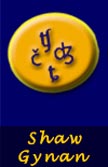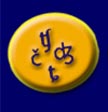INNOVATIVE TEACHING SHOWCASE
Sociolinguistics Lecture
Introduction
Linguistics 204 is an introductory course on sociolinguistics that fulfills a general education requirement in social science at Western Washington University. As enrollment has increased over the last ten years, the course has grown as well, now attracting as many as 180 students per quarter. Sociolinguistics has been taught in a fairly traditional manner with thirty hours of lecture and discussion, six films, four objective tests, two short papers (a critical summary and a brief research project), and a cumulative final.
Professor Shaw N. Gynan, who taught the Linguistics 204 course, traveled to Jacksonville, Florida in April, 2000, to receive the Award for Innovative Excellence in Teaching, Learning and Technology at the 11th Annual International conference on College Teaching and Learning. Dr. Gynan presented a paper at the conference, "Transforming Undergraduate Sociolinguistics Lectures with Technlogy: Inclusive Student-Centered Education" (see below). Dr. Gynan was selected as part of a campus-wide call for nominations to identify faculty who have contributed significantly to the improvement of teaching and learning in higher education.
Transforming Undergraduate Sociolinguistics Lectures with Technology: Inclusive Student-Centered Education
Educational technology has expanded very significantly in recent years. College instructors now have at their disposal a number of tools that promise to improve dramatically the teaching of lecture courses. Like the conductor's baton, educational technology will allow instructors to direct students in large courses with greater precision and more pleasing results than in the past.
Background
Student performance in Linguistics 204 has tended to be average, on a par with other social science offerings. The mean performance on unit exams has been a 2.7. Although the short papers provide limited opportunity for higher cognitive learning, objective tests have been the primary method of assessment. Student evaluation of the course has also been average. Weaker students have felt that the testing does not focus on what they know and stronger students want more of a challenge. Attrition from the course was from ten to 15%.
This class was chosen to be included in an experimental Freshman Interest Groups (FIGs) project. Students enrolled in two lecture courses and a library seminar on research techniques. Sociolinguistics and an introductory political science course were linked by a seminar entitled "The Politics of Language and Ethnic Identity." A total of 50 freshmen co-enrolled in the lecture courses and one of two library seminars with 25 students each.
Objectives
Instructors participating in the FIGs attended a series of seminars on the use of technology to improve the undergraduate educational experience. My own interest in this projects was two-fold. First, I wanted to involve all students actively, more than they had been previously. Secondly, I wanted the class to be challenging at all levels of cognitive learning, from knowledge and comprehension to synthesis and critical appraisal.
Method
Sociolinguistics was "transformed" in a number of ways. Course enrollment was limited to 110. A FIGs website directed students to a course website for sociolinguistics. The principal access to the course was through a calendar of lecture dates for the quarter-long course. Hyperlinks on the dates led to lecture notes; on-line, self-correcting practice exams; threaded discussions, film handouts, links to other websites related to language and society, an on-line survey, and student presentations. The lecture notes could be downloaded and printed, and served as a visual aid to in-class presentations on the course topics by the instructor. The web-based lecture notes were supplemented by transparencies and PowerPoint presentations. PowerPoint was especially useful for facilitating analysis by the class of material from the media, which could be segmented into a number of digital files and then presented sequentially along with comments and questions to elicit response from the class. The on-line exams served as a data bank for actual test items, which were generally modified and changed for the actual in-class tests. There were a total of ten threaded discussions, each of which was directed by two groups of five students each. For each group there was a set of five questions which required students to interact with the material at varying levels of cognitive learning, following Bloom's taxonomy. Students were therefore required to recite or restate material during class discussions, and then to express opinions or evaluate and involve the class as a whole. Students posted their contributions to the threaded discussion, and these formed the basis of the discussions on the lecture topics in class. During the quarter students worked in groups of five on a research project in preparation for a final presentation using a website projected onto a wall screen. To this end, each group of five students had at least one member who was also in the library seminar, since that was where students were being trained to develop web pages.
Results
The web-based lecture notes had to be converted from previously existing files, and many challenges arose. Special phonetic fonts proved to be highly problematic, and some material had to be scanned, providing less than satisfactory results. In these cases, transparencies were used and handouts supplied to clarify unclear parts of the online notes. The notes were quite popular, however, and most students downloaded them, often relying on them exclusively and ignoring the course text. The PowerPoint presentation was highly successful. The embedded auditory and visual files, along with focussed comments and questions, provides an ideal environment in which to engage students. The only drawback is that a single two-hour presentation is extremely time-consuming to prepare.
The on-line exams were a major headache to install and proofread, but students used them very heavily. The practice exams had a curious effect. Unit exam scores improved nearly an entire letter grade, but the final exam remained unchanged from the average of past courses. Students were able to engage in rote memorization for individual tests, but the strategy failed for the cumulative final, where qualitatively superior techniques of memorization and a quarter of consistent preparation were required for success. The threaded discussions were partially successful in that all students responded to their assignments well, and for the first time in such a large class, all students had to get up and speak before their peers, as well as lead discussion. Other students were not required, but rather only invited, to participate in the discussion, and consequently, no one did. Not once did any other student actually post comments to the contributions made by the students chosen to lead the discussions. Students groused that they would rather hear their professor lecture than listen to their inarticulate peers bumble through the material. The web-based presentations were highly original. Of the twenty groups, 18 succeeded in developing a website. The presentations were uniformly excellent, with colorful graphics. The instructor met with every single group early on in the quarter to discuss the project and to provide direction. Presentations were made in a fairly orderly fashion at the rate of four per fifty minute period, which gave each participant exactly two minutes to speak. This may seem very short, but students proved, on the whole, capable of delivering concise and informative presentations within the limits proposed. The drawback was that only the faithful in the course (and those slated to talk) attended the presentations.
Evaluations for the course were nearly identical to those of past, untransformed classes. The professor was rated as highly enthusiastic, but students found the class to be of only average value. The big change was in attrition. Exactly one student dropped the course, producing a rate of less than one percent. On a more qualitative plane, the brighter students participated far more actively in this course and assumed roles of leadership within the groups. Freshmen, often lost in this class in particular owing to the rather abstruse nature of the material and no prerequisite study of linguistics, assumed significant roles in directing the web-based presentations. Weaker students, who formerly merely flunked all of the exams, at least had to post writing to the Web for everyone to read, and had to speak to all of their peers. Of note was a group of five hefty young men from the football team. To a man they were not articulate and failed their tests consistently, but they did write and speak to the class, and in this sense accomplished more than similar students have in the past.
Follow-up
Sociolinguistics will be offered again as a FIG in the fall of 2000. A number of changes are contemplated to improve what was a successful first foray into web-based instruction. Tests will continue to be on-line, but will be shorter and based on chapters instead of units. The tests will serve to demonstrate format and give examples, but it is hoped that students will learn quickly that memorization will not help with the actual in-class exam. More lectures will be prepared using PowerPoint and the techniques described above that were so successful. Threaded discussions will focus exclusively on higher level cognitive skills (opinion, synthesis, demonstration, dramatization, appraisal). The same format of ten leaders for each discussion will be followed, since the posted essays were of very high quality, but all students will be required to contribute to discussions that they are not leading five times during the quarter (that is, they must contribute to a total of 60% of the course discussions). (A TA can be trained to read over the discussion contributions and record grades.) The library seminar will get students up and running on web-page development much more quickly, and web pages will be posted with enough leadtime to allow the instructor and students to go over the site and make appropriate corrections.
Conclusion
Technology cannot replace the quality of the classroom experience, but the experiment described above certainly resulted in more interaction from all students, contributing to an inclusive educational experience which left no one out, and which apparently convinced students to stay in the class, despite the difficulty of the material. The greatest promise of technology in education is enhancement of the community experience that college is often purported to represent. Ironically, while web-based courses allow the instructor to step out of the limelight more often to allow students, even in large lecture classes, to take the lead, the instructor still plays a pivotal role in directing student attention to the critical points to be made in the class. The result, at it's best, is not unlike that of the conductor, in this case leading and inspiring a symphony of voices to explore the truths latent in the field of inquiry.
↑ Go to top



